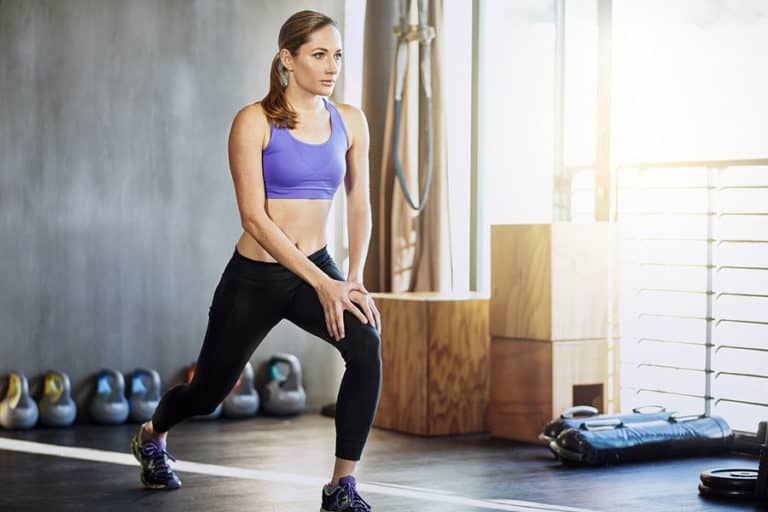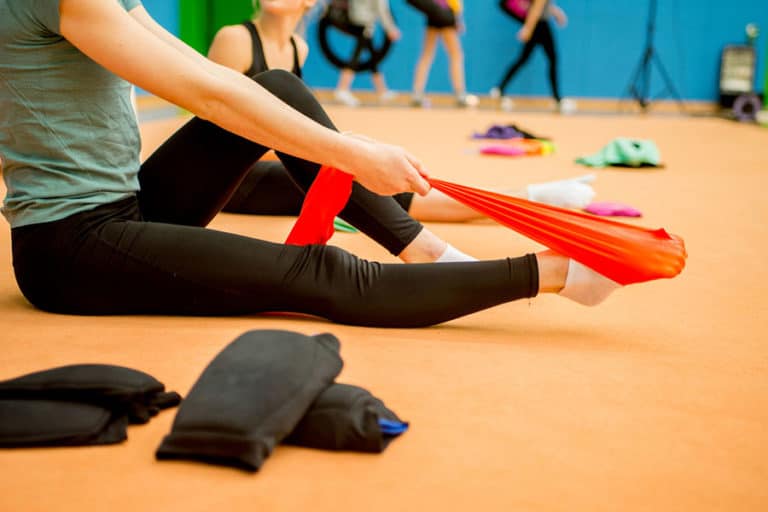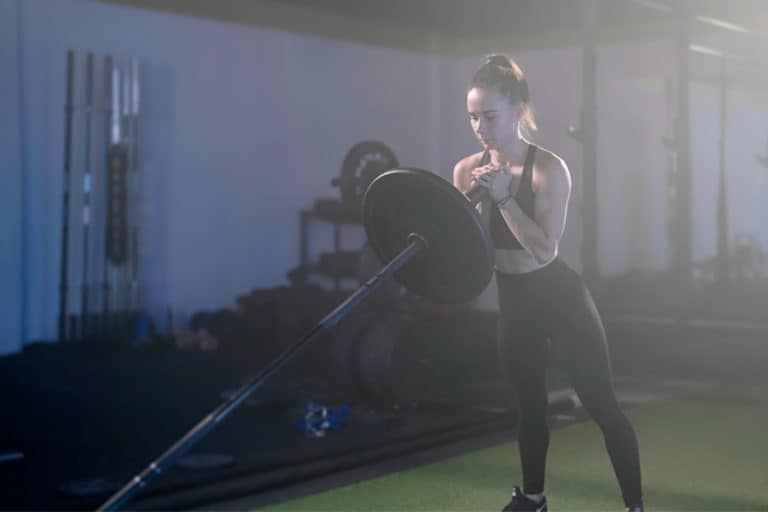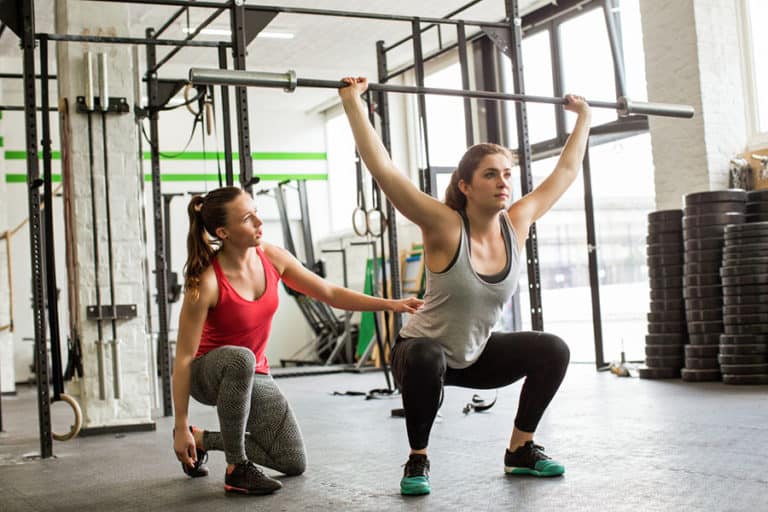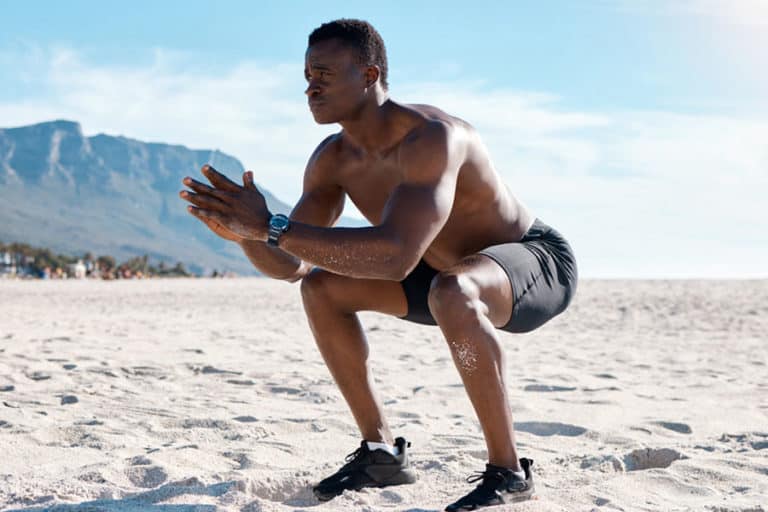Half Squat: Proper Form, Variations, Safety Tips
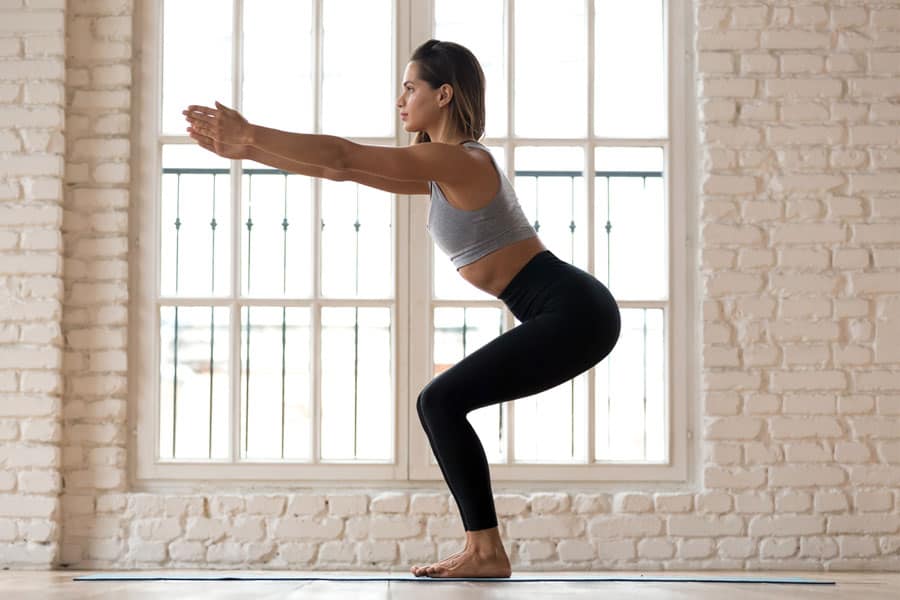
How to do | Muscles Worked | Who should/should not | Add to routine | Safety Tips | Benefits | Variations
The half squat, also known as the partial squat, is a popular variation of the famous parallel squat/full squat.
Often considered an incorrect way of squatting, surprisingly, half squats have a plethora of benefits.
When performed with the right technique, they are a great way to train your lower body by targeting your quads without adding strain to your glutes.
How to do a half squat?
Half squat is a functional exercise, i.e., you must have done it in your everyday life without even realizing it.
However, performing half squats with the proper form and technique is essential to avoid injury.
Steps to follow:
- Start by standing with your feet shoulder-width apart and your toes pointing slightly outward.
- Plant your feet firmly on the floor.
- Place your arms on your hips.
- Keeping your core tight and glutes engaged, lower your hips back and down as if you were going to sit in a chair.
- Pause before your thighs are parallel to the floor. Hold the stance for a moment.
- Ensure your knees stay in line with your toes and do not cave inward.
- As you lower yourself, you may raise your arms out in front of you for balance.
- Drive back up through your heels to the starting position.
Muscles Worked
Primary muscles worked due to the partial range of motion are:
Quadriceps
- Rectus femoris
- Vastus lateralis
- Vastus medialis
- Vastus intermedius
Secondary muscles activated due to the partial range of motion are :
Hamstrings
- Biceps femoris
- Semimembranosus
- Semitendinosus
Glutes
- Gluteus medius
- Gluteus minimus
Hip flexors
- Iliacus
- Psoas
- Pectineus
- Rectus femoris
- Sartorius
Core muscles
- Rectus abdominis
- External oblique muscles
Who should and should not do half squats?
Half squats, the easier version of parallel squats, can be easily performed by people of all fitness levels. However, here is a list of specific categories of people that should intentionally include or refrain from the exercise:
Who should do
- Anyone looking for a low-impact squat alternative that is easy on your knees can perform half-squats.
- Half squats are more forgiving than full-depth squats due to its partial range of motion. This makes it a must-add for runners who wish to avoid the “runner’s knee” [1]National Library of Medicine: Runner’s knee: what is it and what helps?.
- Beginners must include this exercise as it helps boost confidence to perform advanced-level squats that need you to squat deeper. Moreover, it is also beneficial to build your ability to perform other complex exercises.
Who should avoid
- If you have any previous injury or pain, especially in your lower body. You should consult your healthcare provider or fitness instructor before adding it to your routine.
Adding it to your routine
Here is how you can program half squats into your routine based on your fitness level:
Stand-alone exercise
Beginner level: 2-4 sets of 12-15 reps.
Intermediate/advanced level: 3-6 sets of 15-20 reps (ideally with weights)
Part of a circuit
Here is a sample workout routine for beginners who wish to incorporate half squats into their fitness regimen:
| Beginners Level Exercises | Reps |
| Warm-up (Light cardio/Jumping jacks) | 3-5 minutes |
| Step-up | 10-12 |
| Mountain climbers | 12 |
| Half squats | 12 |
| Air squats | 10 |
| Cool down (Cat cow pose) | 1-2 minutes |
Intermediate and advanced-level fitness enthusiasts can follow the workout circuit provided below:
| Intermediate/Advanced Level Exercises | Reps |
| Warm-up (Half-squats/Step-ups) | 3-5 minutes |
| Push-up | 15-20 |
| Shoulder press(weights as per your capacity) | 12-15 |
| Crunches | 10-12 |
| Goblet squats | 10 |
| Cool down (Cat cow pose) | 1-2 minutes |
Note: You may customize the exercises and reps as per your physical capacity. Run the circuit by your fitness instructor before you begin.
Safety Tips
Performing exercises while keeping safety measures in mind prevents injuries and lets you focus more on the exercise. Here are some safety tips for doing half squats:
Warm-up
Before starting the exercise by doing some light cardio and stretching. This will help to increase blood flow [2]Mayo Clinic: Aerobic exercise: How to warm up and cool down and loosen up your muscles.
Don’t try to push yourself too hard
If you are using weights, start with a lighter weight and gradually increase the load as you get stronger.
Moreover, listen to your body. Stop the exercise immediately and seek medical help if you feel any pain.
Partial range of motion
The squat depth of the half squat exercise is the most integral element of all.
A half squat doesn’t require you to squat as you do for a full squat or a deep squat.
Only by following the correct technique can one make the exercise effective, safe and target the specific muscles.
Seek professional guidance
Suppose you are new to this exercise. It’s always best to seek professional guidance from a certified trainer.
They will be able to show you the correct form and technique and help you avoid any mistakes.
Maintain the proper form
Keeping your feet shoulder-width apart and knees in line with your toes will help you prevent injuries and unnecessary strain.
Benefits of half squats
Being a compound exercise [3]Australian Fitness Academy: WHAT ARE COMPOUND EXERCISES?, half squats work on multiple muscle groups at once, making it an efficient way to tone your entire lower body. However, the benefits do not limit to only toning. There are multiple other advantages of this exercise.
Some of the benefits associated with half squats are:
Reduced risk of a knee injury
When done with the proper form, half squats actually reduce the risk of knee injuries. It promotes knee stability as the knees stay in line with the toes throughout the move.
Improved balance and coordination
Half squats can help improve your balance and coordination. This is due to the fact that the exercise challenges your body in a way that forces you to use multiple muscle groups simultaneously.
Better mobility
Performing half squats regularly loosens and stretches out the muscles in your lower body. This improves mobility and range of motion. Since it is also a functional exercise, it naturally improves the physical mobility required for day-to-day activities.
Better sprint performance
Half squats have also been shown to improve sprint performance [4]National Library of Medicine: Jump-Squat and Half-Squat Exercises: Selective Influences on Speed-Power Performance of Elite Rugby Sevens Players, likely due to the fact that they help build strength in the lower body muscles causing them to work more efficiently.
Athletes/jumpers with strong lower body muscles can generate more power and force, which is essential for explosive exercises.
Prepares your body for bigger lifts and advanced squats
Half squats do not require you to go as deep as a deep knee/full-depth squat.
Thus, a lifter aiming to lift heavy lifting loads may use the half squat as a starting point to help gradually prepare their bodies and muscles for the heavier weights.
Moreover, including half squats in your routine can help you with better squat mobility to advance to doing full squats.
It can be done anytime/anywhere
Half squat is a bodyweight squat, i.e., it does not necessarily require any other weight apart from the weight of your body. Hence, this makes it convenient to do it anytime and anywhere.
Variations to try
Here are some half-squat variations/modifications you can try per your fitness requirement.
Half squat with a chair/box/bench
This squat variation is meant for a squatter who needs support or doesn’t know to estimate the half squat depth. They can use a chair, box, or an adjustable bench to help. This is how you do it:
- Position the chair, box, or bench behind you before you start squatting.
- Adjust the height of the chair/box/bench such that it is suitable for a half squat, unlike the parallel squat.
- When you lower yourself into a half squat, place your glutes on the edge of the chair/box/bench.
- Pause for a second and then push back up to the starting position.
Advanced half squat variation – dumbbells or barbell half squat
If you want to make the half squat more challenging, you can hold a dumbbell in each hand at your sides or use a barbell.
Here’s how to do it:
- Stand with your feet shoulder-width apart and hold a dumbbell in each hand at your sides. (If you’re doing a barbell squat, place it across your shoulders, and stand under the squat rack.)
- Keeping your core tight and glutes engaged, lower your hips back and down in a half squat.
- Hold the pose for a second and then push back up to the starting position.
Conclusion
Half squats are a great exercise for building lower body strength and can be adapted to any fitness level. Remember to keep safety measures in mind to avoid any injuries. Add it to your routine and follow the proper half squat technique to reap its full benefits.
References
| ↑1 | National Library of Medicine: Runner’s knee: what is it and what helps? |
|---|---|
| ↑2 | Mayo Clinic: Aerobic exercise: How to warm up and cool down |
| ↑3 | Australian Fitness Academy: WHAT ARE COMPOUND EXERCISES? |
| ↑4 | National Library of Medicine: Jump-Squat and Half-Squat Exercises: Selective Influences on Speed-Power Performance of Elite Rugby Sevens Players |


